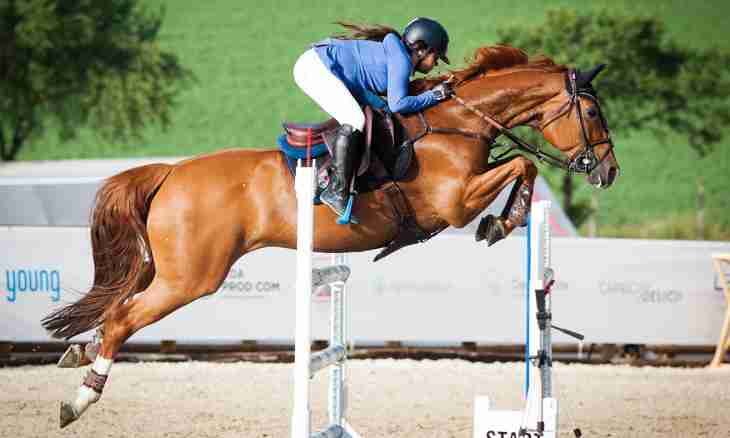The way of movement of a horse, or her course, is called a pace. The pace of a horse in the nature is called natural, a pace visited - artificial. Anyway, the show of the jumping horse bewitches.
Instruction
1. One of the main natural paces - a step or walking. It is the slowest way of movement for a horse. In a minute the animal will pass about 120 meters, having taken from 110 to 130 steps. Speed, actually, reaches 5 km/h. From outside seeming simple, the step demands from a horse of big muscular expenses. Scheme of the movement of legs is as follows: left lobby, right back, right lobby, the left back.
2. Lynx. This pace will seem to the horseman more likely uncomfortable. But the quality is compensated by quantity - the speed of a horse reaches 13-15 km/h. The uniqueness of such course consists in very short instant when all four legs come off the earth to replace diagonal couple: left front and right back on the right lobby and the left back. Horses trotters, participating in jumps are capable to gather speed to 50 km/h.
3. Amble. Is faster pace, than a lynx though the algorithm of the movement is almost identical. The podvisaniye moment is more tightened - when all four legs are torn off from the earth - due to serial intensive pushing away by hind legs. The step turns out more, than at a lynx, from here and higher intensity of the movement. The amble in most cases is natural inherited quality, the trotter can almost not impart it.
4. Gallop. The most high-speed course of a horse. The best race horses at competitions approach a level in 70 km/h. Average speed gallop fluctuates from 50 to 55 km/h. The essential difference from an amble consists in the leading role of front legs. Depending on with what leg the pace is begun, distinguish the right and left galop. Gallop which speed does not exceed 60 kilometers is called "kenter", more quick and high-speed - a pit or is mashed.
5. Artificial paces are developed at a horse by means of instilling by her by the person of conditioned reflexes. pirouettes, a capriole belong to these ways a passage, a piaffa, kurbt, the Spanish step, the Spanish lynx, etc. Generally these types of a pace are used for an indicative dressage that it is the fullest to express grace and advantages of breed of a horse. Also art of the equestrian will not remain unaddressed.
6. For four natural paces there is one universal classification: a collected pace, average, added and free. As criterion serves extent of control of the equestrian over a racer. For example, at a collected step the horse goes more accurately, raising legs above. Average prepares a horse for transition to the added and free paces. So the rider takes control over an animal gradually, without frightening a horse by sharp movements.

